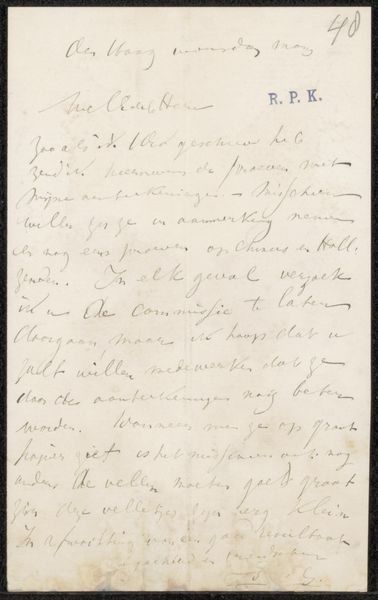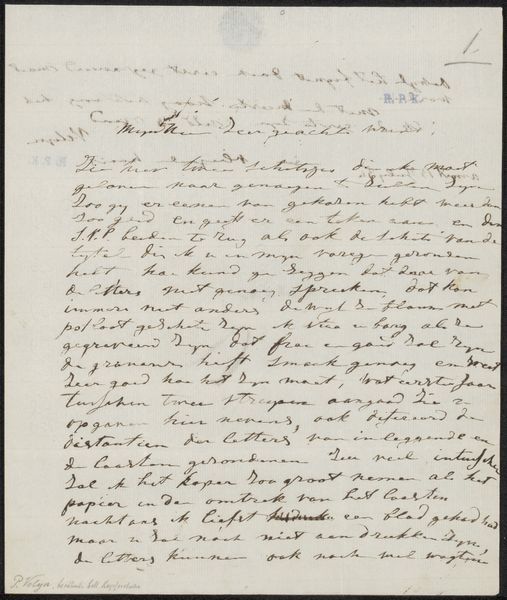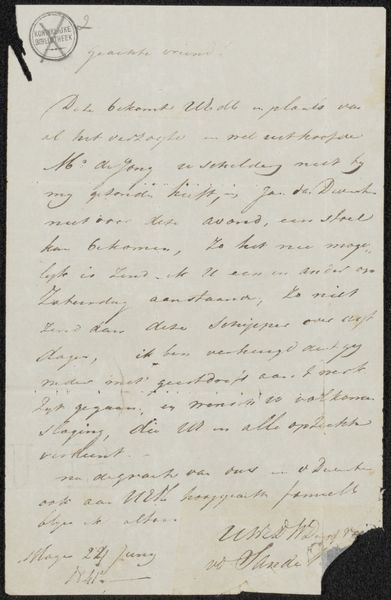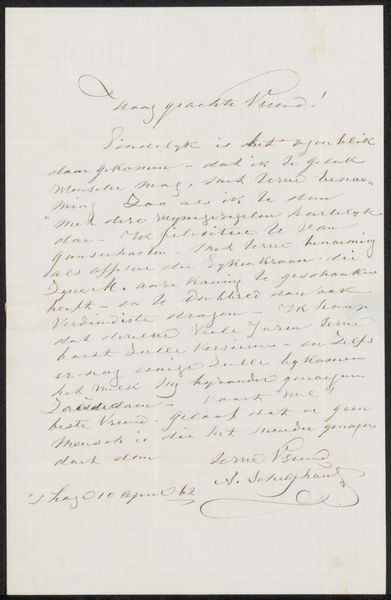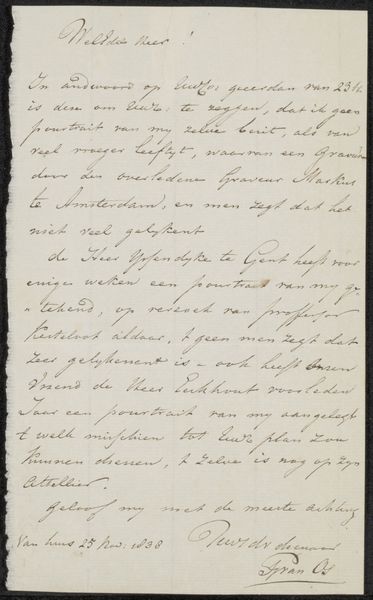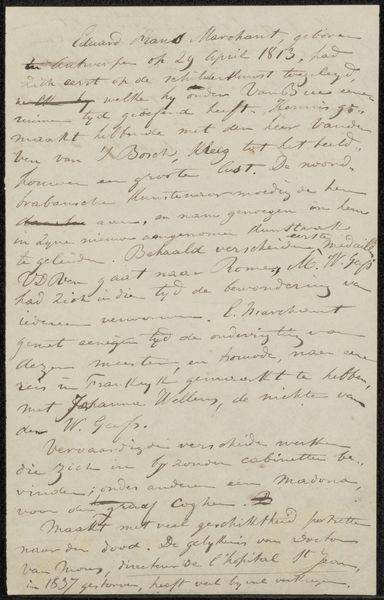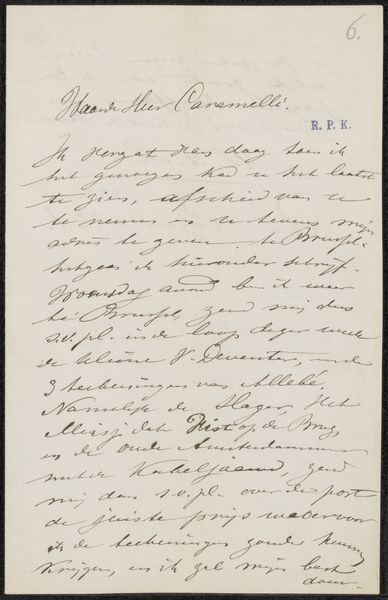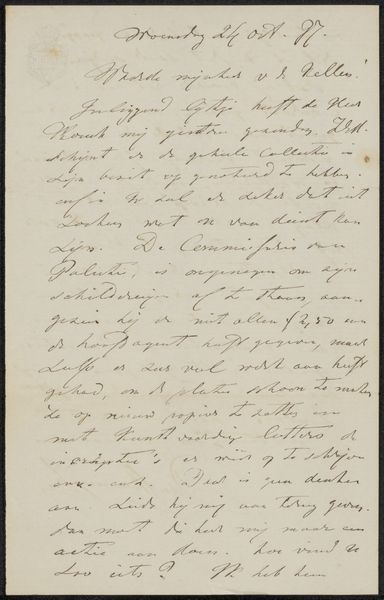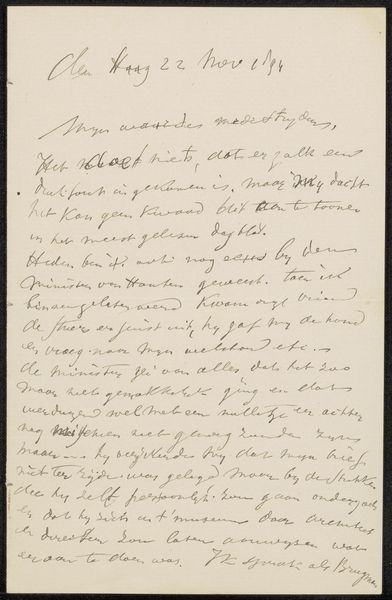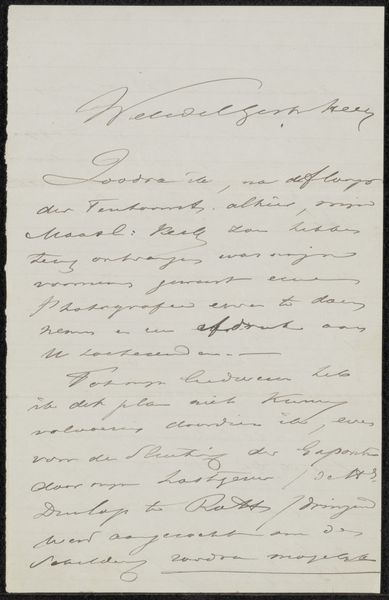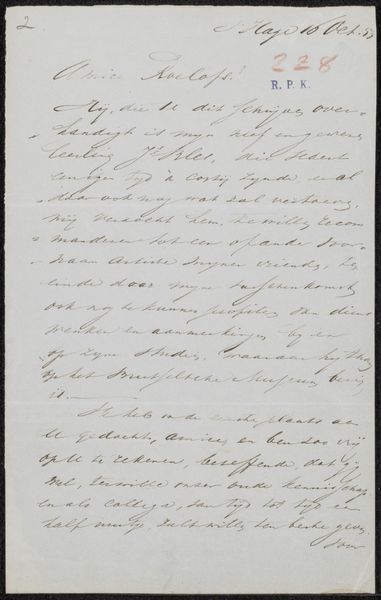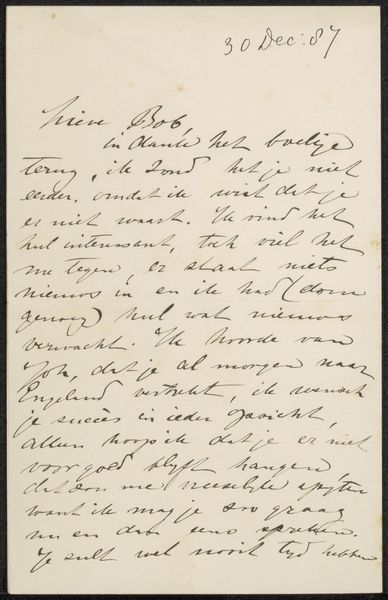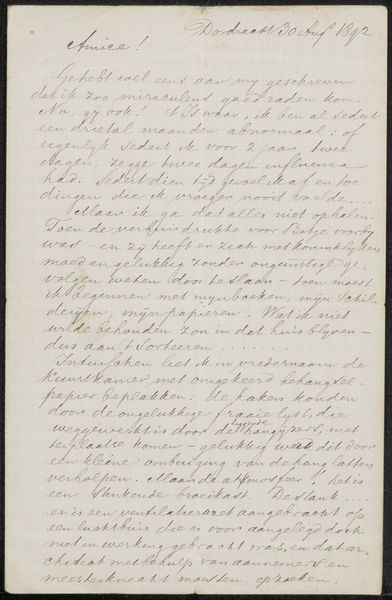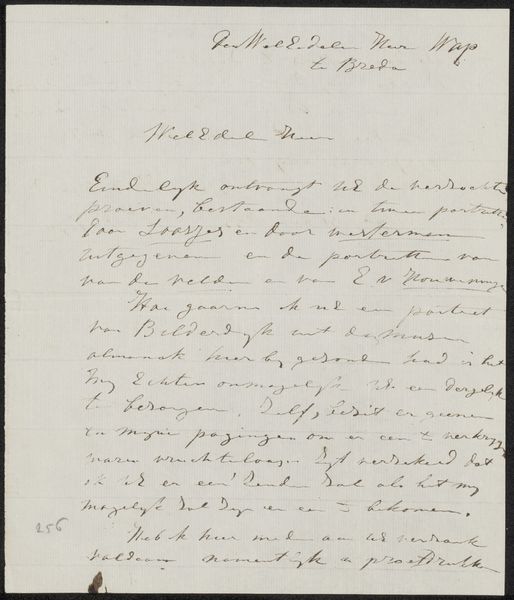
drawing, paper, ink, pen
#
drawing
#
paper
#
ink
#
pen
Copyright: Rijks Museum: Open Domain
Curator: This compelling letter is entitled "Brief aan jonkheer Hendrik Teding van Berkhout (1879-1969)," thought to be made sometime between 1914 and 1929. Etha Fles crafted it using pen and ink on paper. Editor: It strikes me as an intimate, personal communication. The hurried, looping script suggests immediacy and urgency—a snapshot of thought. It’s interesting how handwriting itself functions as an imprint of character. Curator: Absolutely. Given Fles's position as a prominent art critic and advocate for women artists, understanding her relationships within the art world—including correspondences like this one—is critical to recognizing the networks of support and intellectual exchange that shaped early 20th-century Dutch art. Who was she writing to, and what was the nature of their relationship? These questions influence how we read it. Editor: Notice the consistent forward slant of the writing—as if her ideas were propelled urgently to their conclusion, yet anchored by firm, consistent downstrokes showing considerable character. Even without understanding a single word, these strokes reveal a sensibility for precision and passion. There are images buried within these handwritten words. Curator: Her words themselves are part of the artwork here. While we don't have specific details about its contents, this letter almost certainly touches on broader questions about art and its social role at a fascinating historical moment—the era spanning from just before World War I to the interwar years, and especially to those with more traditionalist beliefs that were threatened and/or were threatened by modernism. How can correspondence illuminate her dedication to pushing boundaries? Editor: It really is an emotionally engaging relic from this earlier moment. This object reveals more about not just Fles as a individual, but about an epistolary tradition and that value of handwriting, lost somewhat as we move increasingly to the digital realm. There’s value in recognizing such profound differences. Curator: Exactly. For scholars studying art history and gender, documents like these are crucial primary sources. They allow us to recover women’s voices and perspectives within a male-dominated art world, uncovering personal stories from their day-to-day exchanges. Editor: Thank you. This quick but keen peek has prompted me to wonder, for starters, what visual clues this might hold about its place and value in the larger world.
Comments
No comments
Be the first to comment and join the conversation on the ultimate creative platform.
